
In Albania, World War II began with its invasion by Italy in April 1939. Fascist Italy set up Albania as its protectorate or puppet state. The resistance was largely carried out by Communist groups against the Italian and then German occupation in Albania. At first independent, the Communist groups united in the beginning of 1942, which ultimately led to the successful liberation of the country in 1944.

The Chetniks, formally the Chetnik Detachments of the Yugoslav Army, and also the Yugoslav Army in the Homeland and the Ravna Gora Movement, was a Yugoslav royalist and Serbian nationalist movement and guerrilla force in Axis-occupied Yugoslavia. Although it was not a homogeneous movement, it was led by Draža Mihailović. While it was anti-Axis in its long-term goals and engaged in marginal resistance activities for limited periods, it also engaged in tactical or selective collaboration with Axis forces for almost all of the war. The Chetnik movement adopted a policy of collaboration with regard to the Axis, and engaged in cooperation to one degree or another by both establishing a modus vivendi and operating as "legalised" auxiliary forces under Axis control. Over a period of time, and in different parts of the country, the movement was progressively drawn into collaboration agreements: first with the puppet Government of National Salvation in the German-occupied territory of Serbia, then with the Italians in occupied Dalmatia and Montenegro, with some of the Ustaše forces in northern Bosnia, and, after the Italian capitulation in September 1943, with the Germans directly.

Dragoljub "Draža" Mihailović was a Yugoslav Serb general during World War II. He was the leader of the Chetnik Detachments of the Yugoslav Army (Chetniks), a royalist and nationalist movement and guerrilla force established following the German invasion of Yugoslavia in 1941.
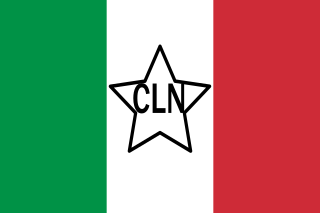
The Italian resistance movement was the Italian resistance groups who fought the occupying forces of Nazi Germany and the fascist collaborationists of the Italian Social Republic during the Second World War in Italy from 1943 to 1945. As a diverse anti-fascist movement and organisation, the Resistenza opposed Nazi Germany, as well as Nazi Germany's Italian puppet state regime, the Italian Social Republic, which the Germans created following the Nazi German invasion and military occupation of Italy by the Wehrmacht and the Waffen-SS from 8 September 1943 until 25 April 1945.
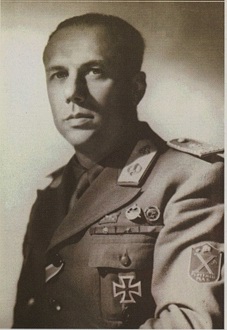
The Decima Flottiglia MAS was an Italian flotilla, with marines and commando frogman unit, of the Regia Marina created during the Fascist regime.

Alexander Livingston Nicol Jr. was an American actor and film director. Nicol appeared in many Westerns including The Man from Laramie (1955). He appeared in more than forty feature films as well as directing many television shows including The Wild Wild West (1967), Tarzan (1966), and Daniel Boone (1966). He also played many roles on Broadway.

Operation Southeast Croatia was a large-scale German-led counter-insurgency operation conducted in the southeastern parts of the Independent State of Croatia during World War II. It was the first of two German-led operations targeting mainly Yugoslav Partisans in eastern Bosnia between 15 January and 4 February 1942. Several days after the conclusion of Operation Southeast Croatia, a follow-up operation known as Operation Ozren was carried out between the Bosna and Spreča rivers. Both operations also involved Croatian Home Guard and Italian troops and are associated with what is known as the Second Enemy Offensive in post-war Yugoslav historiography. The Second Enemy Offensive forms part of the Seven Enemy Offensives framework in Yugoslav historiography.

Operation Trio was the first large-scale joint German-Italian counter-insurgency operation of World War II conducted in the Independent State of Croatia (NDH), which included modern-day Bosnia and Herzegovina. It was carried out in two phases within eastern Bosnia from 20 April to 13 May 1942, with Ustaše militia and Croatian Home Guard forces taking part on the Axis side. The aim of the operation was to target all insurgents between Sarajevo and the Drina river in eastern Bosnia. These included the communist-led Yugoslav Partisans and Serb nationalist Chetniks. Differentiating between the rank and file of the two insurgent factions was difficult, as even the communist-led insurgent groups consisted mainly of Serb peasants who had little understanding of the political aims of their leaders.

Jewish resistance under Nazi rule took various forms of organized underground activities conducted against German occupation regimes in Europe by Jews during World War II. According to historian Yehuda Bauer, Jewish resistance was defined as actions that were taken against all laws and actions acted by Germans. The term is particularly connected with the Holocaust and includes a multitude of different social responses by those oppressed, as well as both passive and armed resistance conducted by Jews themselves.

World War II in the Kingdom of Yugoslavia began on 6 April 1941, when the country was invaded and swiftly conquered by Axis forces and partitioned among Germany, Italy, Hungary, Bulgaria and their client regimes. Shortly after Germany attacked the USSR on 22 June 1941, the communist-led republican Yugoslav Partisans, on orders from Moscow, launched a guerrilla liberation war fighting against the Axis forces and their locally established puppet regimes, including the Axis-allied Independent State of Croatia (NDH) and the Government of National Salvation in the German-occupied territory of Serbia. This was dubbed the National Liberation War and Socialist Revolution in post-war Yugoslav communist historiography. Simultaneously, a multi-side civil war was waged between the Yugoslav communist Partisans, the Serbian royalist Chetniks, the Axis-allied Croatian Ustaše and Home Guard, Serbian Volunteer Corps and State Guard, Slovene Home Guard, as well as Nazi-allied Russian Protective Corps troops.

Force 10 from Navarone is a World War II novel by Scottish author Alistair MacLean. It serves as a sequel to MacLean's 1957 The Guns of Navarone, but follows the events of the 1961 film adaptation of the same name. It features various characters from the film who were not in the book, and leaves out some major characters from the book.

Silent Night is a 2002 television film set on Christmas Eve in 1944, during the Battle of the Bulge of World War II and is loosely based on true events.
Cahill is a name of Irish origin. It is the anglicised version of the Gaelic "Ó Cathail" meaning "descendant of Cathal".

The Italian Civil War was a civil war in the Kingdom of Italy fought during the Italian campaign of World War II between Italian fascists and Italian partisans and, to a lesser extent, the Italian Co-belligerent Army.
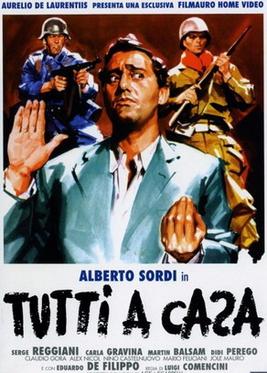
Everybody Go Home is a 1960 Italian comedy-drama film directed by Luigi Comencini. It features an international cast including the U.S. actors Martin Balsam, Alex Nicol and the Franco-Italian Serge Reggiani. Nino Manfredi was rejected for the starring role because Alberto Sordi wanted it.
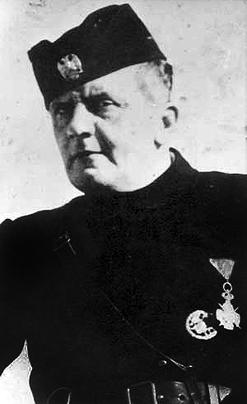
Dobroslav Jevđević was a Bosnian Serb politician and self-appointed Chetnik commander in the Herzegovina region of the Axis-occupied Kingdom of Yugoslavia during World War II. He was a member of the interwar Chetnik Association and the Organisation of Yugoslav Nationalists, a Yugoslav National Party member of the National Assembly, and a leader of the opposition to King Alexander between 1929 and 1934. The following year, he became the propaganda chief for the Yugoslav government.
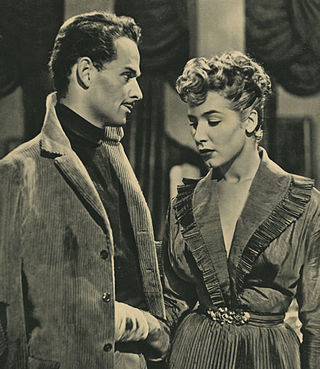
Franklin Latimore was an American actor.

13 Rue Madeleine is a 1947 American World War II spy film directed by Henry Hathaway and starring James Cagney, Annabella, Richard Conte and Frank Latimore. Allied volunteers are trained as spies in the leadup to the invasion of Europe, but one of them is a German double agent.

Ernest Peterlin was a Slovene military officer who rose to a senior position in the Royal Yugoslav Army prior to the Second World War. Married to Anja Roman Rezelj. A decided anti-Communist, during the war he became a prominent anti-Partisan military leader and one of the main exponents of the pro-Western faction of the Slovene Home Guard, an anti-Communist collaborationist militia active in parts of German-occupied Slovenia between 1943 and 1945. In 1945, he was tried and sentenced to death by the new Yugoslav Communist authorities and executed in 1946.
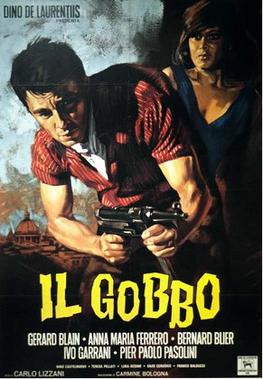
The Hunchback of Rome is a 1960 Italian crime-drama film directed by Carlo Lizzani. It is loosely based on the real life events of Giuseppe Albano, an Italian partisan that was involved in the Roman Resistance against German occupation between 1943 and 1945.



















